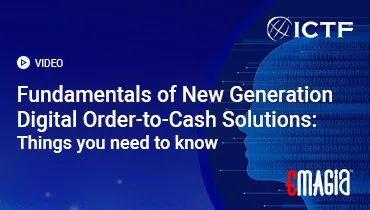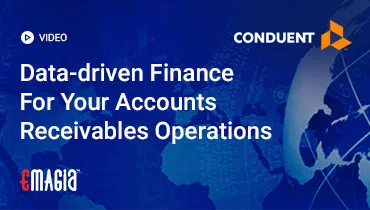Introduction to Software Debt Collection
Software debt collection is transforming how businesses and agencies handle delinquent payments. Modern debt collection software enables automation, compliance tracking, and improved recovery rates, reducing manual effort while ensuring efficiency.
By integrating advanced tools such as CRM, automated workflows, and analytics, debt collection programs can help organizations maintain cash flow, reduce delinquency, and streamline recovery processes.
What is Debt Collection Software?
Debt collection software is a specialized system designed to manage, track, and automate the recovery of unpaid debts. It combines data management, communication tools, compliance monitoring, and reporting to support efficient collections.
This software is not just a tool but a strategic resource for credit management, helping organizations improve operational efficiency and debtor relationships.
Key Features of Debt Collection Software
- Automated payment reminders and follow-ups
- Integration with CRM and ERP systems
- Compliance tracking and reporting
- Data analytics and predictive modeling
- Secure online payment processing
- Multi-channel communication capabilities
Importance of Debt Collection Programs
Debt collection programs are essential for maintaining healthy cash flow and minimizing financial risk. These programs leverage technology to track delinquent accounts, send automated reminders, and provide reporting insights.
By adopting efficient debt collection solutions, companies can improve recovery rates while reducing operational costs and manual workload.
Types of Debt Collection Software
Collections Software for Businesses
Collections software for businesses is designed to handle high volumes of debtor accounts efficiently. These solutions help manage multiple debtor accounts simultaneously while maintaining compliance with relevant regulations.
Features often include automated workflows, integrated CRM systems, debtor scoring, and communication tracking, allowing businesses to recover debts faster and more efficiently.
Collection Agency Software
Collection agency software offers advanced tools for agencies handling debts on behalf of multiple clients. It includes multi-client management, detailed reporting, compliance automation, and case tracking.
This software enables agencies to manage their workload effectively while maintaining transparent communication with clients and debtors.
Loan Collection Software
Loan collection software is designed specifically for financial institutions and lenders to manage the repayment process, track delinquent accounts, and automate follow-up procedures. This specialized software improves efficiency in recovering outstanding loan payments while maintaining compliance with regulatory requirements.
Key benefits of loan collection software include automated reminders, payment plan management, debtor scoring, and integrated reporting. These features help lenders minimize defaults and improve overall loan recovery rates.
How Loan Collection Software Works
The software integrates with banking and CRM systems to track repayment schedules, monitor overdue accounts, and send automated notifications to debtors. Advanced solutions also offer predictive analytics to assess the likelihood of repayment and suggest tailored recovery strategies.
Automated Debt Collection Systems
Automated debt collection systems streamline the collections process by replacing manual tasks with technology-driven workflows. This automation reduces errors, speeds up recovery, and allows staff to focus on high-priority cases.
Core Components of Automated Debt Collection
- Automated Communication: Emails, SMS, and phone calls sent at scheduled intervals.
- Workflow Management: Automatically escalates cases based on payment status.
- Data Integration: Connects with CRM, ERP, and accounting systems for accurate debtor tracking.
- Compliance Automation: Ensures all collection practices meet legal requirements.
Benefits of Automation in Debt Collection
Automation improves efficiency, reduces operational costs, and ensures consistency in the collection process. It also enhances debtor engagement by delivering timely and relevant communication, improving the chances of successful recovery.
Features of the Best Debt Collection Software
Choosing the right debt collection software is critical to maximizing recovery rates and maintaining compliance. Below are the essential features every top-tier solution should offer:
- CRM Integration: Centralized debtor management and communication tracking.
- Automated Workflows: Streamlined case management to reduce manual intervention.
- Compliance Tracking: Ensures collection practices align with regulatory standards.
- Analytics and Reporting: Insightful dashboards and reports to monitor collection performance.
- Multi-Channel Communication: Integration with email, SMS, voice, and portal messaging.
- Secure Payment Processing: Safe and transparent payment channels for debtors.
- Cloud-Based Access: Enables scalability and remote management of collection operations.
The Benefits of Using Debt Collection Software
Debt collection software is not just a tool for automation—it is a strategic asset that improves efficiency, accuracy, and compliance. Organizations that adopt advanced debt collection programs gain significant benefits in operational efficiency, recovery rates, and customer experience.
Increased Efficiency and Reduced Delinquency
Automated workflows streamline the collections process, reducing manual work and human error. This allows collection teams to focus on high-value activities, improving recovery rates and minimizing delinquency.
Improved Accuracy and Compliance
Debt collection software enforces standardized processes and automates compliance checks. This reduces errors and ensures adherence to regulatory requirements, reducing legal risks and penalties.
Cost Savings and Cash Flow Improvement
Automation reduces operational costs and accelerates debt recovery. Faster collections enhance cash flow, giving organizations better control over working capital and financial planning.
Better Customer Experience
Modern collection software enables personalized communication, respectful payment reminders, and flexible repayment options. This builds trust and improves debtor engagement, resulting in higher recovery success.
Challenges in Implementing Debt Collection Software
While debt collection software offers substantial benefits, organizations face challenges during adoption. Understanding these challenges is critical to a successful implementation.
Integration with Existing Systems
Integrating debt collection software with ERP, CRM, and accounting systems is often complex. Ensuring seamless connectivity is essential for real-time data sharing and operational efficiency.
Data Quality and Security
Accurate debtor information and secure handling of sensitive data are vital. Organizations must implement strong data governance to ensure data integrity and compliance with privacy regulations.
Regulatory Compliance
Debt collection is subject to strict regulations that vary by jurisdiction. Software must support compliance tracking and reporting to avoid legal issues and maintain reputation.
User Adoption and Training
Technology adoption requires change management. Teams must be trained on the new system, and workflows must be adjusted to fully leverage the software’s capabilities.
How to Choose the Best Debt Collection Software
Selecting the right software involves careful consideration of features, scalability, integration capabilities, and vendor reputation.
Evaluate CRM and Debt Management Features
The software should offer robust debtor relationship management, integration with CRM systems, and clear tracking of collection activities.
Assess Automation Capabilities
Automation should cover communication, payment reminders, workflow management, and reporting to maximize efficiency.
Consider Integration and Scalability
The solution should integrate seamlessly with your existing financial and operational systems and scale with your business growth.
Review Vendor Support and Reputation
Choose a vendor with proven expertise in debt collection, strong customer support, and a track record of successful implementations.
The Future of Debt Collection Software
The debt collection industry is rapidly evolving with the integration of artificial intelligence, cloud computing, and advanced analytics. These innovations promise to transform how organizations manage collections, improve recovery rates, and enhance debtor experience.
AI-Powered Debt Collection
Artificial intelligence enables predictive analytics, smart prioritization of accounts, automated communication, and fraud detection. AI-powered debt collection systems learn over time to optimize workflows and improve results.
Cloud-Based Debt Collection Platforms
Cloud solutions allow real-time access to collection data, seamless scalability, and remote management. This flexibility enables agencies and businesses to operate efficiently regardless of location.
Integration with Payment Platforms
Direct integration with payment gateways and banking platforms accelerates debt recovery, simplifies reconciliation, and improves debtor convenience.
Enhanced Data Analytics
Advanced analytics tools give organizations deep insights into collection performance, debtor behavior, and risk exposure. These insights support data-driven decision-making and strategic planning.
How Emagia Helps – Revolutionizing Debt Collection
Emagia provides a next-generation debt collection software solution that combines automation, AI-powered insights, and integrated workflows to transform the debt recovery process. By connecting seamlessly with ERP, CRM, and payment systems, Emagia ensures faster collections, improved compliance, and better debtor engagement.
Key benefits of Emagia’s solution include:
- Intelligent Automation: Automated workflows for reminders, escalations, and payment tracking.
- Predictive Analytics: AI-driven models to identify high-priority accounts and optimize recovery strategies.
- Cloud Flexibility: Secure access to collection data anytime, anywhere.
- Regulatory Compliance: Built-in compliance tracking and reporting to meet industry regulations.
- Enhanced Debtor Communication: Personalized communication across multiple channels for better recovery outcomes.
With Emagia, organizations can move beyond traditional debt collection and adopt a smart, scalable approach to recover outstanding payments efficiently.
Frequently Asked Questions (FAQs)
What is debt collection software?
Debt collection software is a tool that automates and manages the recovery of unpaid debts, improving efficiency, accuracy, and compliance in collections processes.
How does automated debt collection software work?
Automated debt collection software uses AI, integrated workflows, and CRM systems to send reminders, track payments, and manage debtor communications without manual intervention.
What are the benefits of using collections software?
Collections software improves efficiency, reduces costs, enhances compliance, and supports better debtor communication to increase recovery rates.
How to choose the best debt collection software?
Consider features like CRM integration, automation capabilities, scalability, vendor reputation, compliance support, and integration with existing systems.
What is the future of debt collection software?
The future of debt collection software lies in AI-powered automation, cloud platforms, integrated payment solutions, and advanced analytics for improved recovery and debtor management.
Final Conclusion
Software debt collection is transforming how businesses and collection agencies operate. From automation to AI-driven insights, modern debt collection software offers efficiency, accuracy, compliance, and a better debtor experience. Organizations that embrace these tools can streamline operations, reduce delinquency rates, improve cash flow, and strengthen customer relationships.
The journey toward effective debt collection starts with understanding the types of debt collection software, evaluating features, addressing implementation challenges, and planning for future trends. This comprehensive approach ensures organizations choose the right solution that meets their operational needs and scales with growth.
Ultimately, the future of debt collection lies in intelligent automation, cloud-based solutions, and advanced analytics. By leveraging these innovations, businesses can transform collections from a reactive process into a strategic driver for operational efficiency and financial stability.


